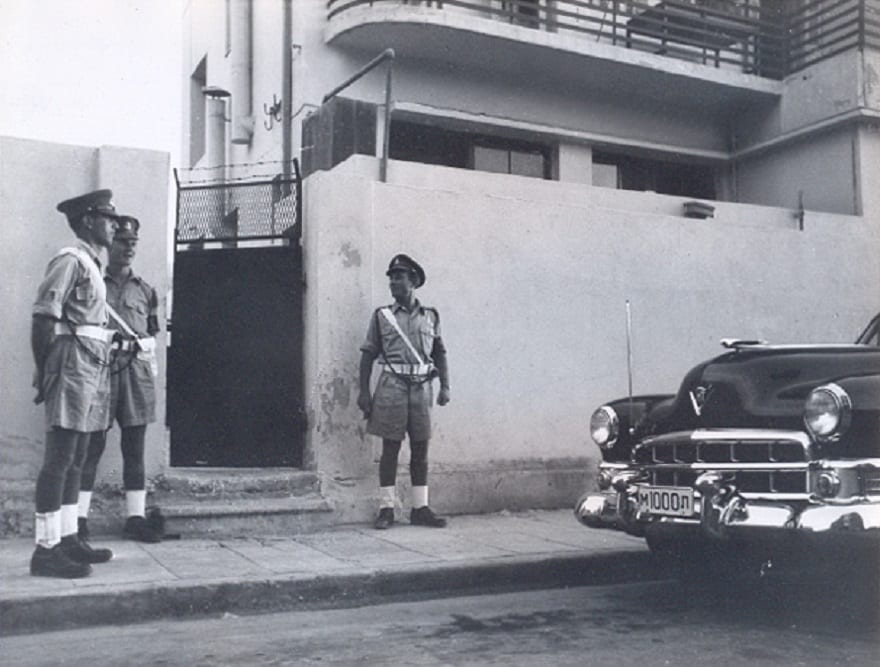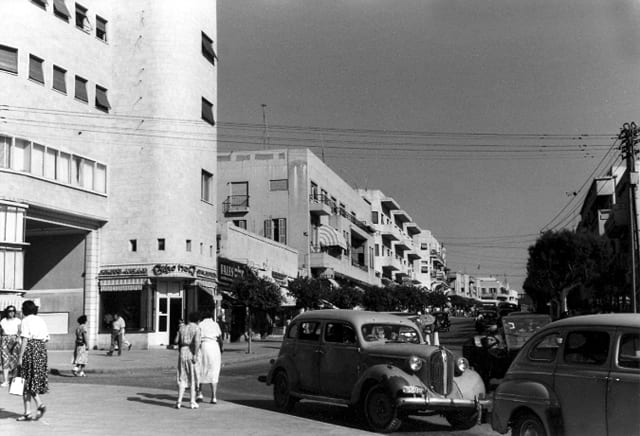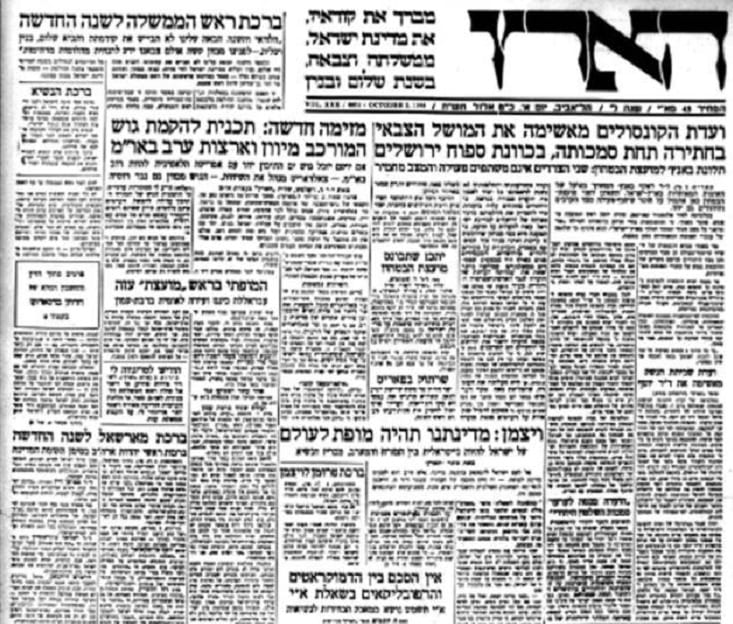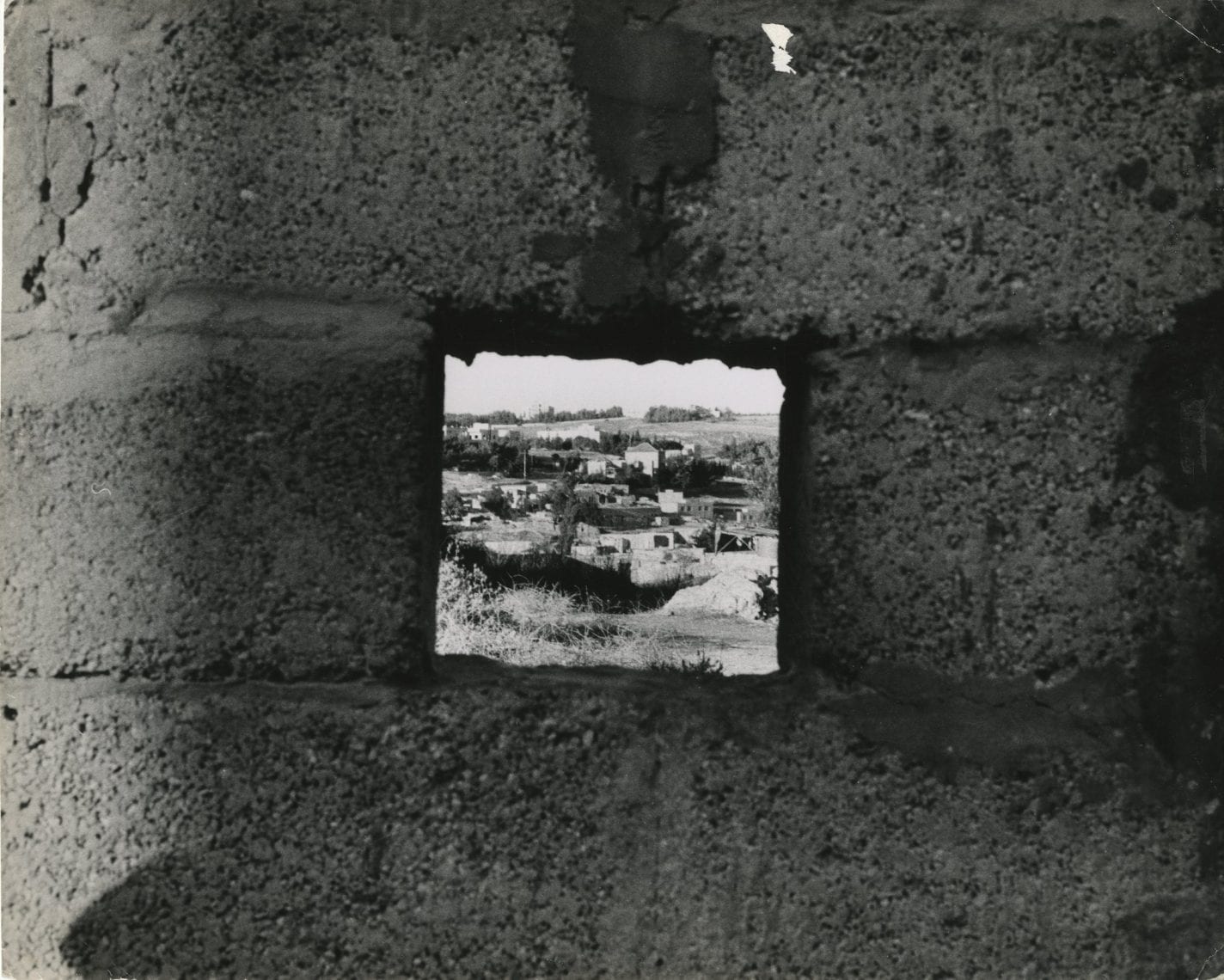If there was a Jewish years hit parade, 1948 would have undoubtedly made it to the top. 2000 years of yearning and hopes, poems and prayers, persecutions, golden ages, then the horrifying epilogue of the holocaust have passed – then on one crucial moment on 5 Iyyar 1948, one short great man got on a small podium in Tel Aviv Rothschild street and declared the foundation of the state of Israel.
By the time of the first Rosh Hashana, October 3rd 1948, the new state was just a baby – four and a half months old. Whereas other infants do not even roll over yet, the state had to stand, walk and sustain itself, no longer having the British babysitter on its side, and surrounded by enemies, who saw it as a foreign invader, a small unwelcome subsidiary of the great western colonial cooperation.

The holiday took place during the second truce of the War of Independence. At that time, the Chizbatron ensemble released their heart moving song “Reut” (comradeship), that everybody loved, even though a few months earlier a civil war nearly broke on the shore of Tel Aviv over the Altalena affair; all the bold and the beautiful used to gather in the Mughrabi cinema and watch “He Walked Through the Fields”, while the new Olim preferred to laugh at some good old Hershel of Ostropol jokes at the “Ohel” theater.
In spite of the uncertainty, fear and ongoing war, the general atmosphere was optimistic, somewhat euphoric. The new year celebrations were launched with a most passionate speech by Ben Gurion to the nation, on the radio, “While still under British rule, and with its support, the Nazi’s allies among the Arabs wished to destroy and demolish us entirely. First by crowds of the Mufti’s robbers and criminals, then soldiers from surrounding states, and finally by regular forces from Jordan, Syria, Iraq, Egypt, Saudi Arabia and Lebanon – stormed through the county in order to destroy the state of Israel, put an end our eternal hopes, and terminate the enormous Zionist undertaking.”

After briefing through the atrocities, he carried on to heroism: “a young Israeli army, founded almost overnight by the blessed Hagana, organized and geared while already fighting battles – defeated the enemy and liberated the state territories, broke the way to sieged Jerusalem, liberated most of the eternal sacred capital and made Israel as proud among the nations as it was in the times of the Maccabees.”
In partly sieged Jerusalem the lifted spirit was blended with grief over the old city that was occupied by the Jordanians. “Haaretz” daily stated that “for the first time ever since the crusades, Rosh Hashana prayers were not held at the Western Wall, and chants could not be heard within the ancient walls of Jerusalem. However, the synagogues outside the walls were packed, including prayers who came from all across the country to stay in Jerusalem for the holiday. The agony over the fall of the old city was somewhat relieved by refugees from the Jewish quarter who settled in deserted villas and mansions of Katamon and Rehavia, from which the Arabs escaped. “Haaretz” also reported that in Adat Hamaaraviyim synagogue of Jews from Morocco, across from the Tower of David, worshippers had to lie down fearing the Arab snipers. In Yeshurun synagogue, the first modern orthodox one in Jerusalem, chief rabbi Herzog as well as the military governor Dov Yosef and other public leaders attended the holiday prayers. Before the Shofar blowing they cited a prayer for the wellbeing of the state, composed a few days earlier by the chief rabbis.

Yediot Aharonot daily chose this verse for the holiday issue front page, above the logo: “We shall come to Zion thou city and thou temple with eternal joy and praise”. There was also a selection of photos from Tashah (5709), including the declaration of the state on 5 Iyyar, with the description: Tashah was the year of Hebrew victory after 2000 years of defeat.
The celebrations in Tel Aviv, as described in “Haaretz”: crowds of women, men and children were filling the streets, greeting each other and paying family visits according to tradition. When evening came, dozens of synagogues were packed with worshipers, many of whom proudly dressed with Zahal uniform. Many Cafés held parties that night, arranged by Zahal for the thousands of soldiers who came to spend their holiday in Tel Aviv.
Soon enough, though, cheerfulness seemed to end, as on the second day of Rosh Hashana, Tel Aviv was alarmed by sirens, while people were leaving the prayer houses. Within minutes, the streets were empty. 25 minutes later it turned out it was a false alarm.

The celebrations were resumed, under lovely autumn weather. The food inspector’s order to increase of the sugar rations from 750 gr. To 900 gr. made the day even happier! There were also some complaints regarding high prices of flowers due to high demand. Also, a plague of thefts was reported – it seems that this has become a yearly tradition ever since. One high profiled breaking happened in Michael Ben Gurion’s (David’s brother) Kiosk, from which 100 Israeli Pounds worth of cigarettes and chocolates were taken.
The festivals were not limited to Israel only. President of the United States, Harry Truman, sent greetings to the new Israeli president Chaim Weizmann, personally wishing him and all Israelis peace and prosperity in their country – which was in fact the first formal address from the U.S.A. to the state of Israel, thus recognizing it as a sovereign state.
Shana Tova to you all!
(Translated from Hebrew by Danna Paz Prins)